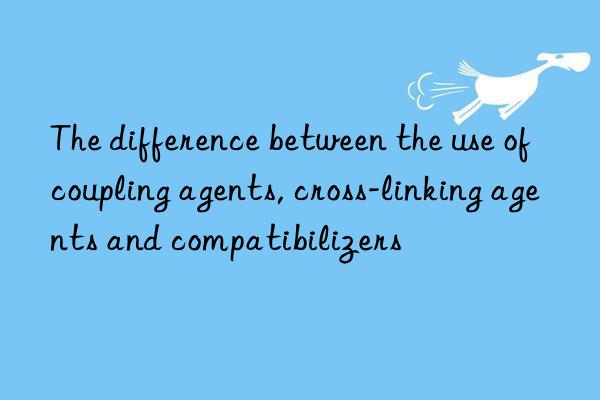
1. The difference between coupling agents and cross-linking agents
Cross-linking agent usually refers to a type of chemical additive that participates in the cross-linking reaction of the resin to connect the active functional groups in the resin to create a network structure. The cross-linking agent can mainly improve the viscosity and elasticity of the working fluid. At the same time, it should also have certain characteristics such as temperature resistance and salt resistance according to the geological characteristics of the reservoir.
Using a small amount of coupling agent can improve the reactivity of organic and hydrolyzable groups and the fixability of carbon groups on the surface of organic materials. In other words, it can It forms a bridge between the resin and the interface to increase the adhesion of coatings and adhesives.
The difference between the two is not very big. The coupling agent is a substance with two different functional groups. Some of the functional groups in their molecules can react with adsorbed water or hydroxyl groups on the surface of inorganic substances, and some of the functional groups can react with organic molecules to form adhesion or coupling. Cross-linking agents are not much different from bridging agents. They can cross-link linear molecules into a network structure.
Cross-linking agents are mainly used in polymer materials, because the molecular structure of polymer materials is like long lines. When not cross-linked, the strength is low and easy to It breaks and has no elasticity. The function of the cross-linking agent is to generate chemical bonds between linear molecules so that the linear molecules are connected to each other to form a network structure, thus improving the strength and elasticity of the rubber.
2. The difference between coupling agents and compatibilizers:
Both can be called surfactants, but their uses are different.
1. Compatibilizer is used to improve the compatibility between blended polymers, that is, the compatibility between two different resins in polymer alloys. They are all produced by reactive extrusion of polyolefins grafted with reactive grafts such as maleic anhydride and GMA, and there are also synthetic polar polymers.
2. Coupling agents are mainly used between inorganic and organic. Their function is to improve the compatibility between fillers and resin molecular chains. High fillers are in the resin. dispersion, such as silane, aluminate, titanate coupling agents;



 微信扫一扫打赏
微信扫一扫打赏
